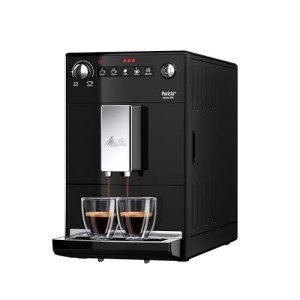Understanding Dual Boiler Espresso Machines: A Comprehensive Guide
Espresso is an art as much as it is a science. For coffee enthusiasts and baristas alike, accomplishing the best shot of espresso necessitates precision and control over developing variables. Modern Espresso Machines of the most reliable methods to achieve this accuracy is through using dual boiler espresso machines. This short article explores the functionality, benefits, and factors to consider of dual boiler espresso machines for both beginners and experienced coffee enthusiasts.
What is a Dual Boiler Espresso Machine?
A dual boiler espresso machine includes 2 different boilers: one for developing espresso and the other for steaming milk. This design enables the user to brew coffee and steam milk concurrently, achieving optimum temperature control for both processes. This is crucial for creating lattes, cappuccinos, and macchiatos, where both active ingredients are essential.
Table 1: Key Components of Dual Boiler Espresso Machines
| Part | Function |
|---|---|
| Espresso Boiler | Heats water to the perfect developing temperature level (around 190 ° F) |
| . Steam Boiler | Heats water to a greater temperature level (around 250 ° F) for steaming milk. |
| PID Controller | Manages the temperature level of the boilers for precision brewing. |
| Group Head | Where the coffee premises sit and hot water travels through. |
| Steam Wand | Provides steam to froth milk. |
Advantages of Dual Boiler Espresso Machines
1. Synchronised Brewing and Steaming
The most substantial benefit of dual boiler espresso machines is the capability to brew espresso and steam milk at the exact same time. This efficiency is especially beneficial in hectic environments, such as cafes, where speed and quality are vital.
2. Consistent Temperature Control
Dual boiler machines typically come with innovative PID (Proportional Integral Derivative) controllers that preserve a constant temperature level throughout the brewing process. Consistency is essential in espresso making to guarantee the best extraction, thus boosting flavor and fragrance.
3. Customization and Versatility
With 2 different boilers, users can personalize the temperature level settings for both espresso brewing and milk steaming. This suggests different kinds of coffee, such as lighter or darker roasts, can be prepared completely to suit individual taste profiles.
4. Suitable for Advanced Techniques
For those interested in latte art or other sophisticated methods, a dual boiler espresso machine supplies the versatility to deal with various milk textures while also extracting espresso. This versatility makes it an appealing option for baristas who wish to hone their abilities.
5. Durability and Durability
Lots of dual boiler machines are developed with high-quality products developed for longevity. They are frequently made from stainless-steel and function resilient elements, making them a worthwhile investment for anybody major about coffee.
Drawbacks of Dual Boiler Espresso Machines
Despite their many advantages, dual boiler machines can have some drawbacks:
- Higher Cost: Dual boiler machines tend to be more expensive than their single-boiler counterparts, which may not appropriate for casual coffee drinkers.
- Size and Space: These machines may occupy more counter top area than others, making them less ideal for small kitchens.
Table 2: Key Considerations When Choosing a Dual Boiler Espresso Machine
| Factor to consider | Explanation |
|---|---|
| Budget | Dual boiler machines can range from ₤ 1,000 to over ₤ 4,000. |
| Size | Check your cooking area space before acquiring. |
| Brand name Reputation | Try to find well-reviewed brands with good consumer assistance. |
| Functions | Consider what functions are necessary (e.g., PID controller, volumetric choices). |
| Upkeep | Some machines may need more regular maintenance than others. |
Frequently asked questions
1. Are dual boiler espresso machines worth the investment?
Yes, they deserve the investment for severe coffee lovers or professional baristas who value precision in espresso extraction and milk steaming.
2. How do I preserve a dual boiler espresso machine?
Routine maintenance consists of descaling the machine, cleaning up the group head, and ensuring that the steam wand is complimentary of milk residue. Speak with the producer's manual for particular standards.
3. Can I use a dual boiler espresso machine for other developing approaches?
Normally, dual boiler machines are designed generally for espresso. However, they can normally brew quality drip coffee and other designs with the best settings and adjustments.
4. What brands are understood for their dual boiler machines?
Some trustworthy brand names consist of La Spaziale, Breville, and ECM. Each brand has its own special features and pricing.
5. What is the average life-span of a dual boiler espresso machine?
With correct care and upkeep, a dual boiler machine can last over a decade, making it a long-term financial investment for coffee lovers.
Dual boiler espresso machines represent the peak of espresso-making innovation, combining art and science into one compact device. While they require a greater preliminary investment and more counter top area, the advantages they offer-- such as synchronised brewing and steaming, precise temperature level control, and resilience-- make them perfect for serious coffee enthusiasts. Understanding the operations, advantages, and considerations for these machines will enable customers to make informed choices and elevate their coffee developing experience. Whether in your home or in a hectic café, a dual boiler machine can genuinely boost the art of espresso.

